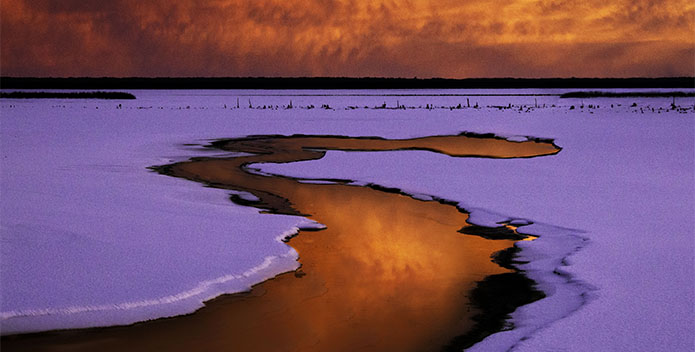Watch any sporting event long enough and eventually you'll see an invisible but palpable force seize control of the game. One team will take control and appear invincible, but in just a moment, this force can switch to the opponent. The word most often used to describe this phenomenon is momentum.
Right now, efforts to restore the Chesapeake Bay and its rivers and streams have momentum. We can see our waters healing—underwater grasses are booming, dead zones are shrinking, and oyster populations are rebounding. In fact, last week, the Chesapeake Bay Program found the highest water quality in the Bay since they started keeping records in 1985.
But just like in a game, this momentum can shift suddenly and without warning. We cannot rest on our laurels. Rather, we need to seize this momentum and push forward.
This week, General Assemblies began in Maryland and Virginia, and on January 22, Pennsylvania's legislature reconvenes. Critical to maintaining our current Bay-saving momentum is securing positive outcomes in our halls of government. Stay tuned over the next few months on how you can take action to sustain this momentum and help Save the Bay!
This Week in the Watershed: Creeping Salt Water, Frederick's Forests, and Climate Change Gases
- Governor Hogan announced that Maryland is joining a coalition of states committing to reduce greenhouse gases in efforts to combat climate change. (Bay Journal)
- Following the Trump administration's repeal of a set of goals to cut power plant emissions across the county, voices throughout Maryland government voiced their disapproval. (Baltimore Sun—MD)
- Residents in Frederick County, Maryland voiced their support to amend the county's regulations on forest protection. (WDVM—MD)
- Salt water creeping inland onto Maryland farms on the Eastern Shore as a result of sea level rise threatens not only the life of trees and crops, but also to release decades of old pollution. (Hakai Magazine)
- The Trump administration plan to allow drilling off the Atlantic Coast is facing resistance for the threat it poses to the region's economy, environment, and fishing industry. (Daily Press—VA) BONUS: CBF Statement
- Low oxygen dead zones are not only a problem in the Bay, but the world's oceans as well. (Baltimore Sun—MD)
What's Happening Around the Watershed?
January 17
- Throughout Virginia: Join us for a free webinar discussing CBF's 2018 legislative priorities in Virginia. CBF's Peggy Sanner will cover a range of issues, from adequate funding for reducing polluted runoff from agricultural and urban areas to oyster replenishment and restoration. Space is limited—register now!
January 18
- Annapolis, MD: Join CBF and others at the annual Maryland Environmental Legislative Summit. Learn about 2018's top legislative priorities and how you can help save the Bay! Click here for more information and to RSVP.
January 21
- Easton, MD: Join us for a delightful afternoon enjoying oysters and wine. Hear from wine connoisseurs and representatives from three Eastern Shore aquaculture farms: Orchard Point Oysters, Madhouse Oysters, and Hoopers Island Oyster Company. There will also be oyster policy experts and scientists on hand to provide information and answer questions. Click here to register!
January 25-February 3
- Throughout Virginia: Help restore the health of the Chesapeake Bay and Virginia's rivers by participating in CBF's Grasses for the Masses program. Participants grow wild celery, a type of underwater grass, in their homes for 10-12 weeks. After 10-12 weeks of grow-out, participants will gather to plant their grasses in select local rivers to bolster grass populations and help restore the Bay. With workshops held throughout Virginia, there's plenty of opportunity to get involved. Click here to find one near you!




